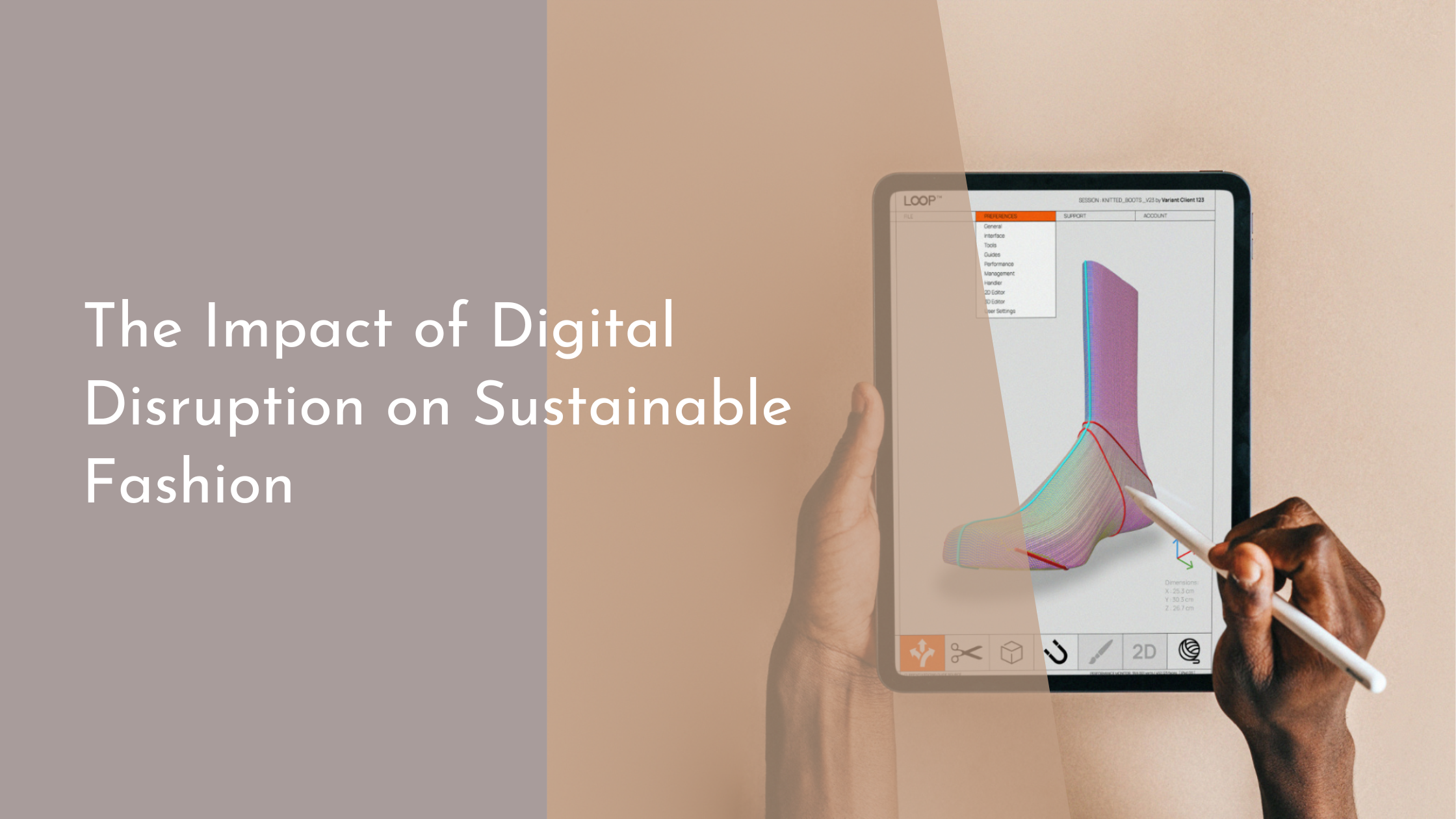The Impact of Digital Disruption on Sustainable Fashion
In recent years, the fashion industry has experienced a significant shift as digital disruption reshapes the traditional boundaries of design, production, and retail. This transformation has opened new avenues for promoting sustainability, a much-needed change in an industry notorious for its environmental impact. As we delve into the realms of digital disruption and sustainable fashion, it’s crucial to understand how these two powerful forces are converging to create a more eco-friendly future for the fashion world.
Understanding Digital Disruption in Fashion
Digital disruption refers to the alteration of existing business models and industry landscapes through digital technologies and innovations. In the context of fashion, this disruption manifests in various ways, from online retail and virtual fashion shows to AI-driven design processes and digital marketing strategies. These technologies are not only revolutionizing how brands interact with consumers but also how fashion itself is conceptualized and produced. By harnessing the power of digital tools, fashion companies can streamline operations, enhance customer experience, and ultimately, reduce their environmental footprint.
Moreover, digital disruption encourages a more dynamic and responsive fashion industry. With the ability to rapidly adapt to trends and consumer demands, brands can minimize overproduction and waste—significant contributors to the industry’s environmental burden. Digital platforms also enable greater transparency in supply chains, allowing consumers to make more informed decisions about their purchases. This newfound transparency is essential for fostering a culture of accountability and driving sustainable practices within the industry.
Sustainable Fashion: A Digital Transformation
The intersection of digital disruption and sustainability in fashion is facilitating a digital transformation that prioritizes eco-friendly practices. Digital tools, such as 3D design software and virtual prototyping, allow designers to experiment with sustainable materials and techniques without the resource-intensive processes traditionally associated with physical samples. These technologies not only reduce material waste but also expedite the design process, enabling more sustainable product development cycles.
In addition, e-commerce platforms are becoming pivotal in promoting sustainable fashion. With the rise of digital marketplaces, consumers have greater access to sustainable brands and products, often accompanied by detailed information about their ethical practices and environmental impact. This accessibility is empowering consumers to make more conscious choices, ultimately driving demand for sustainable fashion and encouraging more brands to adopt greener practices. By bridging the gap between sustainability and technology, digital disruption is paving the way for a more responsible fashion ecosystem.
Innovations Driving Eco-Friendly Fashion
Several technological innovations are driving the push towards eco-friendly fashion, each offering unique solutions to some of the industry’s most pressing environmental challenges. One such innovation is blockchain technology, which enhances supply chain transparency by providing a secure and immutable record of a garment’s journey from production to purchase. This increased visibility helps ensure ethical sourcing of materials and responsible manufacturing processes, promoting trust and accountability across the fashion value chain.
Another groundbreaking innovation is the use of artificial intelligence (AI) in sustainable fashion. AI can optimize various aspects of the fashion lifecycle, from predicting consumer trends to improving inventory management and reducing waste. For instance, machine learning algorithms analyze vast amounts of data to forecast demand accurately, enabling brands to produce only what is needed. This precision not only minimizes excess inventory but also reduces the environmental impact associated with overproduction.
Embracing a Greener Future with Digital Tools
As the fashion industry continues to evolve, embracing digital tools is essential for achieving a greener future. Digital platforms and technologies are not only transforming the way fashion is produced and consumed but also fostering a culture of sustainability and innovation. By leveraging these tools, brands can improve efficiency, reduce waste, and create more sustainable business models that align with the growing demand for eco-friendly fashion.
Moreover, collaboration and sharing of knowledge through digital networks are proving invaluable in the quest for sustainability. Online forums, webinars, and virtual conferences provide platforms for industry leaders, designers, and consumers to exchange ideas and best practices, further driving the adoption of sustainable practices across the fashion sector. By embracing these digital opportunities, the fashion industry can continue to evolve and innovate, leading the charge towards a more sustainable and environmentally conscious future.
As digital disruption continues to reshape the fashion industry, it brings with it the promise of a more sustainable future. By embracing digital tools and innovations, brands can not only improve their environmental impact but also meet the growing consumer demand for ethical and eco-friendly fashion. The convergence of technology and sustainability is paving the way for a more responsible and transparent fashion landscape, where digital solutions play a crucial role in driving meaningful change. Through continued innovation and collaboration, the fashion industry can look forward to a future that balances style with sustainability, ensuring a healthier planet for generations to come.



